Pine Cant Lumber
- September 20, 2023
- 1 comment
Pine cant lumber, originating from pine trees, is a valuable resource in the world of woodworking and construction. It starts as squared-off logs, called cants, and goes through various processing methods to produce an array of lumber products. Due to its inherent strength and dimensional stability, pine cant lumber is often chosen for structural components like joists and rafters in residential and commercial buildings. Its ease of workability, allowing for smooth cuts and finishes, makes it suitable for crafting cabinets, trim, and furniture. The natural aesthetic appeal of pine, combined with its affordability, makes it a preferred choice for those seeking a balance between functionality and aesthetics in their projects.
Pine cant lumber is a type of softwood lumber that is cut from the trunks of pine trees. It is typically square or rectangular in cross-section and is available in a variety of sizes. Pine cant lumber is a popular choice for a variety of construction and woodworking projects, due to its strength, durability, and affordability.

One of the most common uses for pine cant lumber is in framing. Cant lumber is often used for studs, joists, and rafters in residential and commercial construction projects. It is also used for a variety of other applications, such as flooring, decking, and fencing.
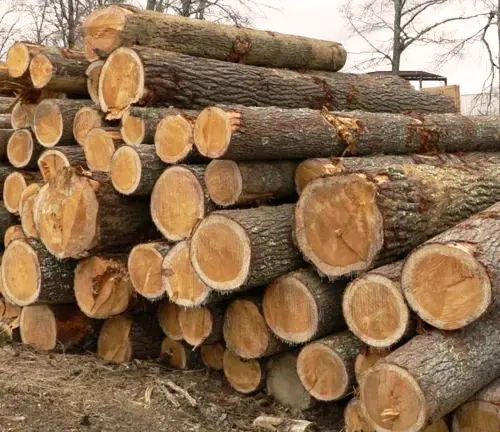
Pine cant lumber is also a popular choice for woodworking projects. It is easy to work with and can be used to make a variety of items, such as furniture, cabinets, and shelves. Pine cant lumber is also a popular choice for outdoor projects, such as pergolas, gazebos, and swing sets.
| Specifications | Description |
| Moisture content | more than 19% |
| Strength | Pine cant lumber is a relatively strong wood for its weight, with a modulus of rupture of approximately 8,900 pounds per square inch. |
| Hardness | Pine cant lumber is a relatively soft wood, with a Janka hardness rating of approximately 540 pounds. |
| Wood Species | Typically derived from various species of pine trees, with Eastern White Pine, Southern Yellow Pine, and Lodgepole Pine being common choices. |
| Grade | Pine cant lumber is graded based on its quality and appearance. Common grades include Select, #1 Common, and #2 Common. Higher-grade lumber has fewer knots and defects and is often used for more visible applications. |
| Texture | It has a fine and even texture, allowing for smooth finishes when sanded or planed. |
| Density | Pine wood has a moderate density, which strikes a balance between strength and weight, making it suitable for a wide range of projects. |
| Availability | Pine Cant Lumber is widely available in most regions, making it a convenient choice for construction and woodworking projects. |
| Fire Resistance | While pine is not inherently fire-resistant, it can be treated with fire-retardant chemicals for applications where fire safety is a concern. |
| Cost | Pine Cant Lumber is generally affordable compared to some other wood species, making it a cost-effective choice for many applications. |
The Origins of Pine Cant Lumber
Pine cant lumber, at its core, begins as squared-off logs, referred to as “cants.” These cants are produced by sawing round pine logs into square or rectangular shapes, setting them apart from the more common practice of directly cutting logs into boards. This unique starting point sets the stage for pine cant lumber’s distinct characteristics.
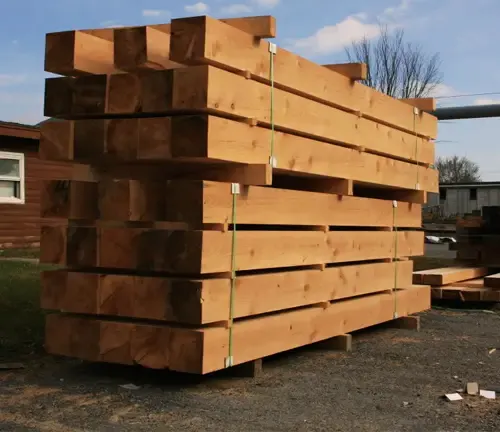
Strength and Durability
One of the standout qualities of pine cant lumber is its impressive strength-to-weight ratio. Pine wood, in general, is known for being sturdy yet lightweight, making it an excellent choice for structural applications. Whether it’s supporting the weight of a roof as a beam or forming the skeleton of a building as joists and framing, pine cant lumber’s structural integrity is a key reason why it remains a trusted material in construction.

Aesthetic Appeal
Beyond its structural merits, pine cant lumber offers an aesthetic appeal that can’t be ignored. Pine wood features a light color with a straight, fine grain pattern. Its natural beauty is further enhanced by occasional knots, resin pockets, and other unique characteristics. This makes it an ideal choice for interior finishes, such as paneling and moldings, where its rustic charm adds warmth and character to spaces.
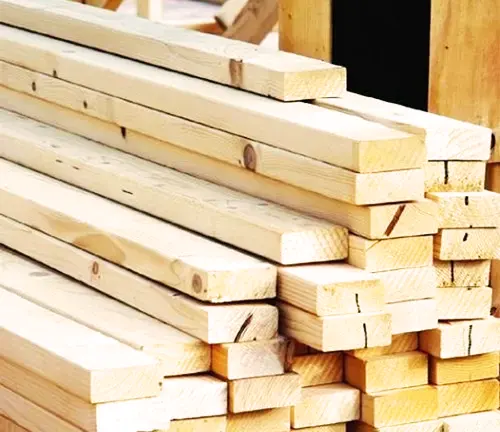
Versatility in Applications
Pine cant lumber’s adaptability extends beyond construction. Woodworkers and furniture makers appreciate its workability—easy to cut, shape, and finish with standard woodworking tools. This makes it a top choice for crafting cabinets, trim, and custom furniture. Its welcoming texture invites various finishing options, including stains, paints, and clear coatings, enabling creative freedom in design.
Sustainability Matters
In an era where sustainability is a growing concern, many pine cant lumber sources are committed to responsible forestry practices. Sustainable pine lumber, such as FSC (Forest Stewardship Council) certified wood, ensures that the lumber comes from forests managed with environmental and social considerations in mind. This aligns with the trend toward eco-conscious construction materials.
Affordability and Availability
Pine cant lumber’s affordability is another factor contributing to its popularity. Widely available in many regions, it provides an economical choice for both professional builders and DIY enthusiasts. Its cost-effectiveness, coupled with its versatility, makes it an attractive option for a wide range of projects, from basic home improvements to large-scale construction
Common Uses
Pine cant lumber finds itself at the heart of numerous construction and woodworking projects, owing to its versatility and strength. One of its most common uses is in framing structures, where it serves as beams, joists, and headers due to its robustness and ability to support heavy loads. Its ease of workability makes it an ideal choice for interior finishes, such as paneling, moldings, and trim, where its natural warmth and rustic charm enhance the aesthetic appeal of homes and buildings.
Additionally, pine cant lumber frequently finds its place in the creation of custom furniture, cabinets, and shelving, thanks to its accommodating nature for woodworking tools and its ability to take on various finishes. Its affordability and wide availability make it a go-to option for both professional builders and DIY enthusiasts, further cementing its role in diverse construction and design projects.

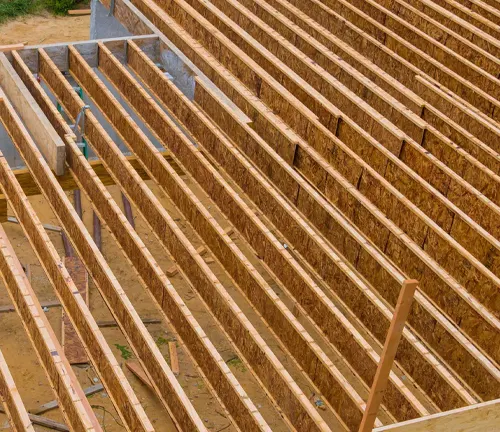
Frequently Asked Questions (FAQs)
- What sets pine cant lumber apart from traditional lumber?
Pine cant lumber distinguishes itself by beginning as squared-off logs, or cants, rather than being directly cut into boards. This unique starting point influences its grain pattern, strength, and workability, setting it apart from more conventional lumber. - Can pine cant lumber be used for outdoor projects?
While pine cant lumber is primarily used for indoor applications due to its susceptibility to decay in outdoor conditions, it can be treated with preservatives to enhance its resistance to the elements. However, it’s important to select the right treatment and maintenance to ensure durability in outdoor projects. - Are there any eco-friendly options for sourcing pine cant lumber?
Yes, there are sustainable sourcing options for pine cant lumber. Many suppliers offer wood certified by organizations like the Forest Stewardship Council (FSC), indicating responsible forestry practices. Choosing certified lumber supports environmentally conscious construction. - Can pine cant lumber be stained to match specific color schemes?
Absolutely! Pine cant lumber readily accepts stains and finishes, making it versatile in achieving desired color aesthetics. Whether you’re aiming for a rich, dark stain or a lighter, more natural look, pine can be customized to match your project’s color scheme. - Are there any design considerations for working with pine cant lumber in rustic or vintage-themed projects?
Pine cant lumber’s distinctive grain patterns and occasional knots can be assets in rustic or vintage-themed designs. Consider highlighting these natural features to add character and authenticity to your project. Additionally, distressing techniques can enhance the aged appearance if desired.


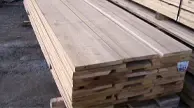
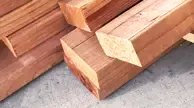
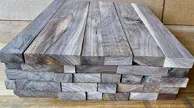
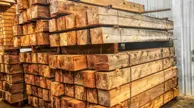
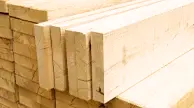

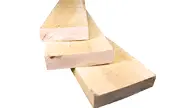
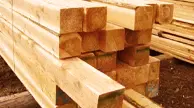
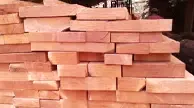



Googled pine cants to educate myself of its definition. I'm interested in building a log cabin. I'm familiarizing myself with 6x6, 8x8 and 10x10 square beams. I now know what pine cants are and it'll help me with pricing of wood beams at multiple saw mills.
Rodney Beaudrot
January 10, 2024 10:59 pm